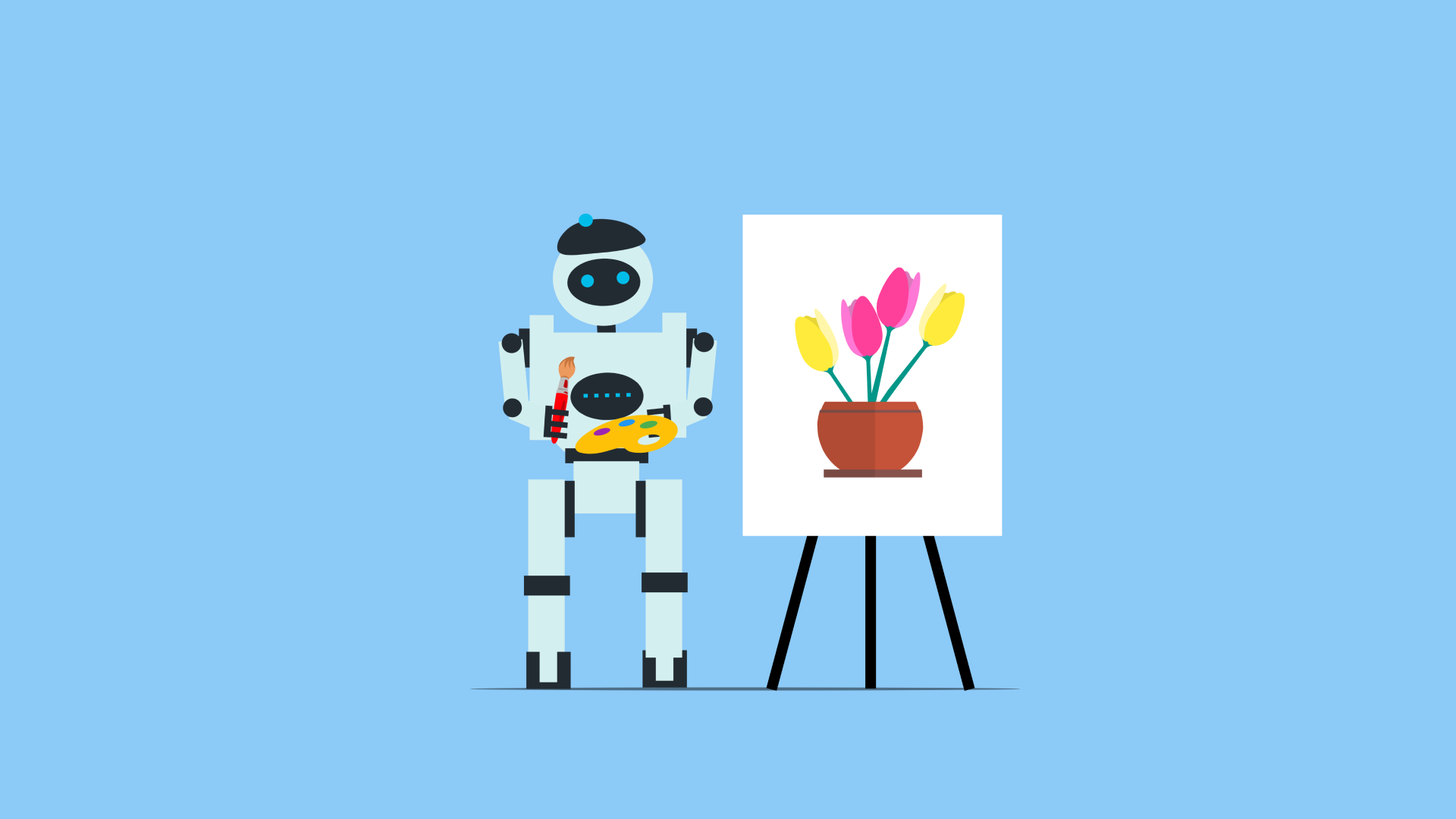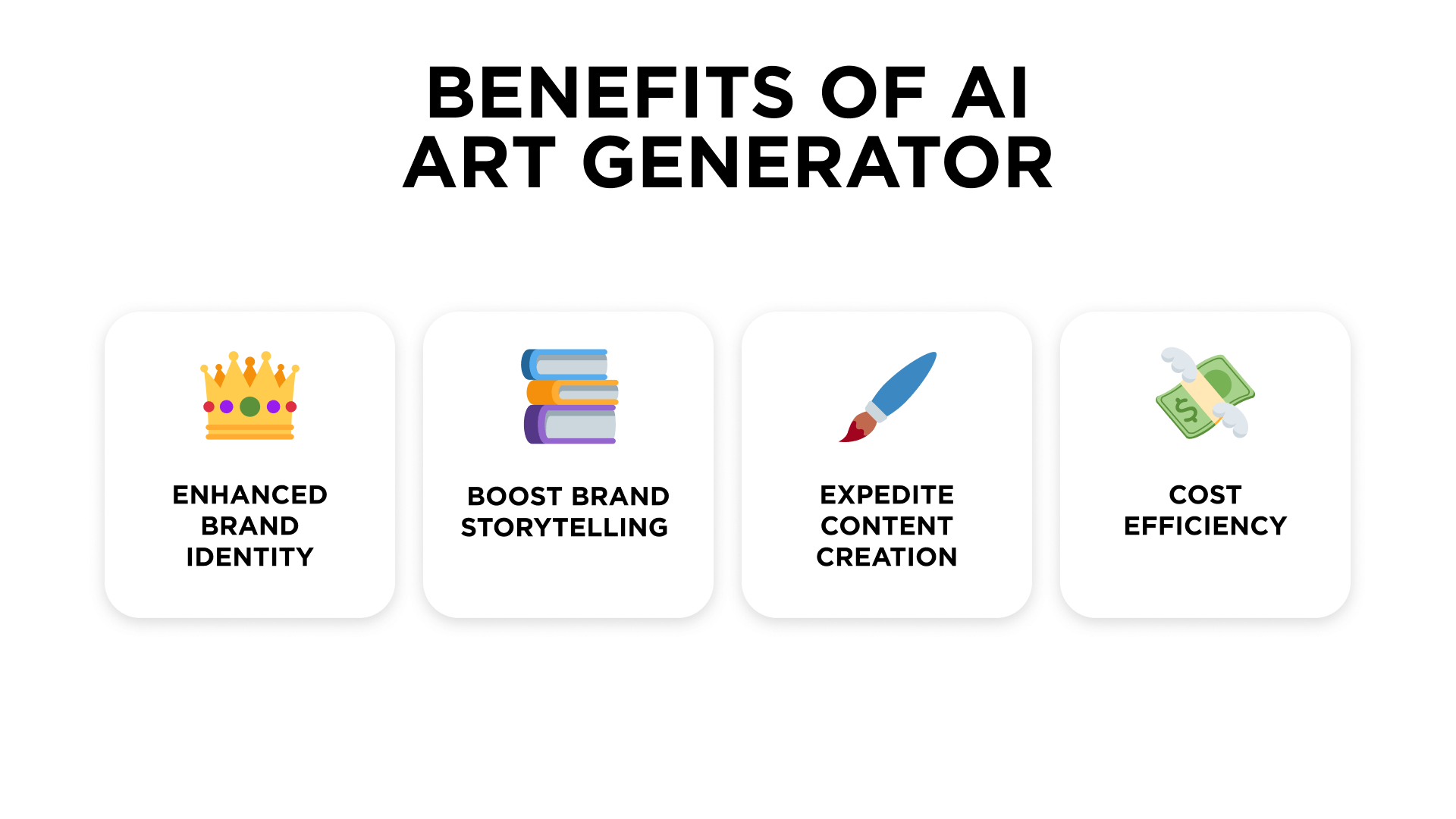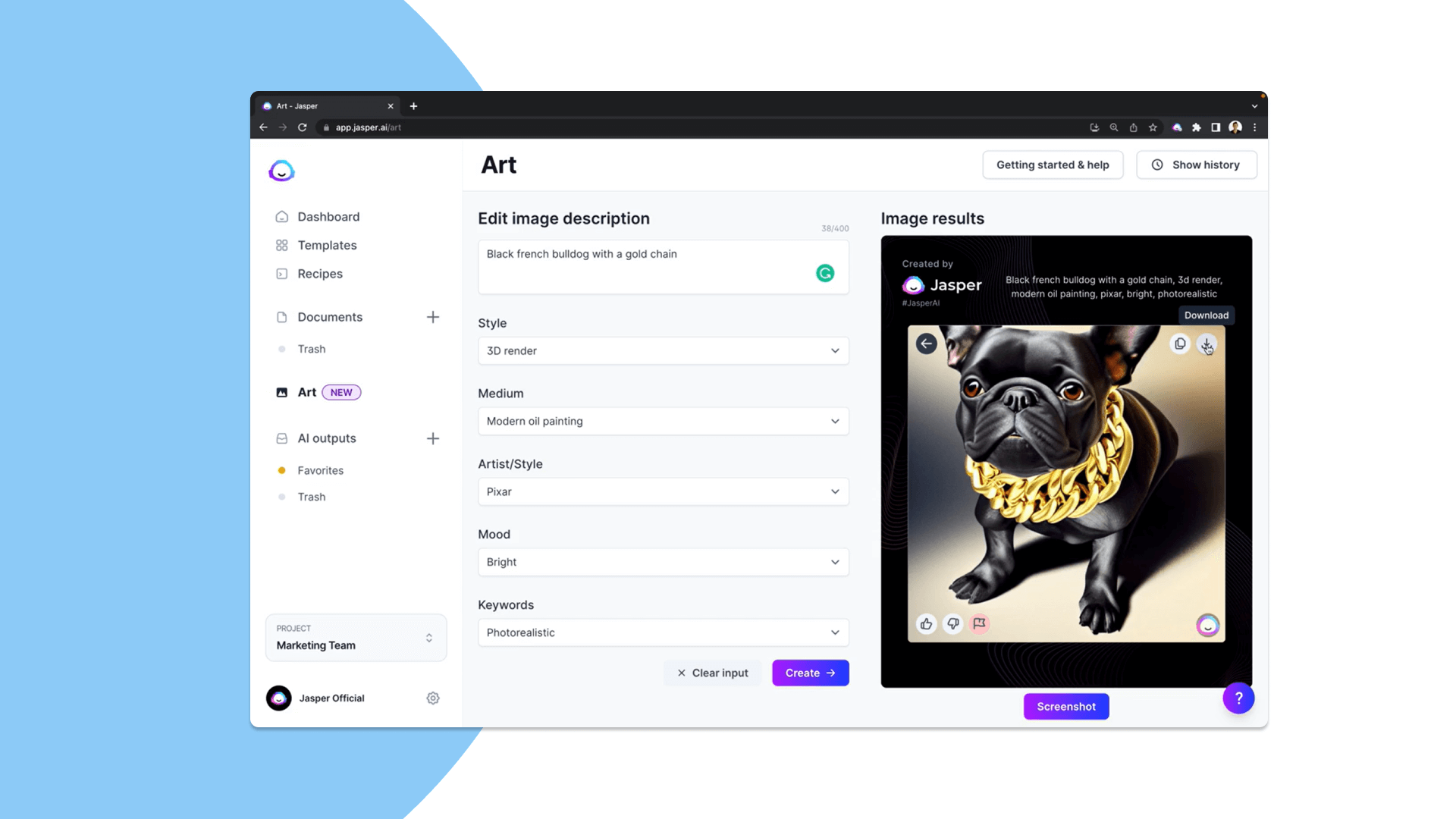Best AI Art Generators for Commercial Use
From pixels to profit: Exploring the best artificial intelligent-based art generators for business applications.

AI art generators are a transformative force in today’s creative and business worlds. Whereas much of the tech innovation to date has focused on automating mundane and repetitive tasks, the creative space is finally seeing disruption at a massive scale.
AI art generators have come in to supercharge how artists work and develop a new generation of creators with limitless creative potential. In this article, we will cover how AI art generators work, why you should use them, and which are the best tools on the market today.
What is an AI art generator?
An AI art generator is a type of software or platform that utilizes artificial intelligence (AI) algorithms to create or assist in the creation of visual art. These AI systems can range from simple style transfer algorithms to more complex generative models capable of producing original artwork.Such generators represent an intersection of technology and creativity, offering new ways for artists, designers, and enthusiasts to explore, experiment, and push the boundaries of visual art creation. These systems provide opportunities to blend human creativity with the computational power of AI, enabling the generation of unique and sometimes unexpected artistic expressions.
Top AI art generators: how they work
To use AI art generators well for your business, it is important to understand how they work, and your role as the user in helping the generators output the type of art you want. First, it is worth knowing that machine learning algorithms and deep neural networks power AI art generators. Developers of these tools use vast amounts of data to train them to identify patterns and generate content.
Developers collect massive datasets of text and images from various sources and organize them so that the AI model can have a rich database from which to learn. With the data collected, the next step is training the model to work as expected.
The AI model is often a General Adversarial Network (GAN), a machine learning model consisting of two competing neural networks: a generator and a diffuser. The generator is the one that creates a new image, while the diffuser works like a quality inspector that distinguishes between real and generated images. This concurrent system forces the AI model to improve its output over time.
Aside from the GAN models, there are also diffusion models that generate AI art but with a different approach that begins with random images. The model then adds or eliminates “noise” to match the user’s prompt.
Model training for AI art generators is crucial for ensuring that the tool understands user input and helps the creator achieve their goal of generating AI art that matches their needs.
With the AI model trained, it is ready for use. Here, you enter a detailed text prompt or keyword explaining to the tool what type of art you’d like it to generate.
The AI art generator will take your prompt, analyze it, and create the art from scratch or modify an existing version per your instructions. The backend will refine the image until it matches what you want before outputting it. From there, you can enter another prompt to refine the art further or use other editing tools to get it to what you need.
Why use AI art generators?

In the ever-competitive business landscape, AI art generators are a valuable addition to any business that wants to enhance its impact. Some benefits and arguments for using AI art generators commercially include the following.
Enhances brand identity
Modern businesses' homogenous and copycat nature can cause your brand to be unseen and perceived as just one among the many. AI art generators can turn this around for your brand by allowing you to create visually appealing and unique content that aligns with your brand identity and resonates with your target audience. With this, you can differentiate your brand and have a standout identity that draws customers in and ensures loyalty.
Boost brand storytelling
Effective storytelling is a game changer in business. AI art generators are your best bet for creating compelling visuals and experimenting with different outputs that evoke an emotional connection with your customers. Telling your brand narrative becomes possible and easy to accomplish with an AI art generator tool, which can be trained to understand your brand mission and the buyer persona, thus seamlessly connecting the two.
Expedite content creation
Compared to human artists, who may hit a creativity slump or need several weeks before turning around a visual project, AI art generators are instantaneous in their creation. They are also available 24/7, allowing your business to create content fast and reliably. With an AI art tool, meeting your content goals becomes simpler, and changes can be made much quicker.
Cost efficiency
Marketing and brand communication needs can easily outgrow your brand’s budget due to the dynamic nature of these two business concepts. Moreover, the constant need to refresh content for websites, social media, and other platforms where your business engages with your audience makes content creation an expensive endeavor.
AI art generators can help your business achieve its marketing and content creation objectives without spending too much. These tools' subscription and tokenization pricing model makes them affordable even for small businesses. Moreover, with AI art generators, you don’t need a full-fledged content creation team or reliance on stock images.
Now that you understand what AI art generators are, how they work, and why you should use them, the next step is to find the right tool for your business. Below is a review of the best AI art tools and what to expect from them.
DALL-E 2

DALL-E 2 is an Open AI image generation tool that succeeded the initial model DALL-E which launched in 2021. DALL-E 2 uses text prompts to generate images and outputs four for each prompt entered. This tool is easy to use for most people, especially if you have any experience with ChatGPT, its sister product from Open AI.
Aside from image generation, DALL-E 2 can also help users edit and retouch photos without complexities. You can also start with a picture and ask the tool to generate variations or add styles you would like.
DALL-E 2 is not a free AI image generator. You pay depending on the pixels of the art generated. These are as follows.
- 1024x1024 - $0.020/Image
- 512x512 - $0.018/Image
- 256x256 - $0.016/Image
Pros
- Accessibility and ease of use.
- Ability to understand vague user prompts.
- Users have exclusive IP rights for generated images.
- Users can monetize generated art.
Cons
- Data set biases can lead to inaccurate art generation.
- Users have limited control over the image control, which may cause frustration.
Midjourney
Midjourney is an impressive AI art generator accessible via a Discord server. The tool is highly creative and can output images that creators could not think of. This feature makes the generator a great addition to your marketing tech stack, whether you have a creative background or not.
Like DALL-E 2, Midjourney’s development continues to date, with the tool improving with each update. It also outputs four images when you enter a prompt, but unlike DALL-E 2, it does not generate well when users enter vague prompts.
Midjourney has four pricing plans creators, and digital art enthusiasts can opt into depending on their needs. These plans are as follows.
- Basic Plan - $10/Monthly or $96/Yearly
- Standard Plan - $30/Monthly or $288/Yearly
- Pro Plan - $60/Monthly or $576/Yearly
- Mega Plan - $120/Monthly or $1152/Yearly
Pros
- High-quality photo-realistic and detailed images.
- Highly creative and imaginative.
- Has an interactive Discord community.
- Ability to match the specific style of an art when generating.
Cons
- Slow generation time that may extend to half an hour.
- All generated photos are stored in a public gallery.
- Steep learning curve for non-Discord users.
Dream by WOMBO

Dream by WOMBO is an interactive mobile app compatible with Android and iOS devices. To use Dream by WOMBO, you are only required to download the app to your mobile device and register an account. You can use its limited free features, but to unlock more capabilities, an upgrade is necessary.
This AI art generator is the best free AI arr generator and is the simplest to use, with just text prompts needed to generate different types of images. Users can also make variations to the images they generate or edit with text.
Dream by WOMBO has three pricing plans, all of which unlock all the app’s features. These plans are broken down below.
- Dream Premium (Monthly) - $9.99
- Dream Premium (Yearly) - $89.99
- Dream Premium (Lifetime) - $99.99
Pros
- Easy to use and accessible on mobile.
- High-quality artistic output.
- A wide variety of artistic styles and customizations are available to explore.
- Perfect for personal creative projects.
Cons
- Complex and open-ended prompts produce abstract results.
- Users have limited control over specific details of images generated.
NightCafe Creator
NightCafe Creator is another top AI image creator worth giving a try. Unlike most AI art tools, this platform has a free trial that you can use without any sign-up needed. Using it is simple, with just text prompts required to generate images.
NightCafe Creator is among the best AI art generators because of its multitude of creation methods. Users can generate images using the following creation modes that yield different results.
i) Stable Diffusion - A next-generation text-to-image algorithm that yields the best results.
ii) DALL-E 2 - Uses Open AI’s text-to-image algorithm.
iii) Artistic - Utilizes Vector Quantized Generative Adversarial Network (VQGAN) to generate high-quality images.
iv) Coherent - Leverages Contrastive Language-Image Pre-Training (CLIP) guided diffusion, which allows better control and composition than VQGAN and hence better quality than Artistic mode.
v) Style Transfer - Takes a normal photo and transforms it into an artistic output based on your preferred style.
NightCafe Creator has a subscription model for users who want to commit to the platform for a specific period. It also has one-off credit buying plans ideal for those who wish to use the tool without any long-term commitment or buy credits as a gift.
The monthly pricing is as follows.
- AI Beginner (100 credits/month) - $5.99/Month or $14.37/Quarterly
- AI Hobbyist (200 credits/month) - $9.99/Month or $23.97/Quarterly
- AI Enthusiast (500 credits/month) - $19.99/Month or $47.97/Quarterly
- AI Artist (1400 credits/month) - $49.99/Month or $119.97/Quarterly
Credit Packs are priced as below.
- 100 credits + 3 days PRO status - $7.99 ($0.08/credit)
- 200 credits + 1 week PRO status - $9.99 ($0.05/credit)
- 500 credits + 2 weeks PRO status - $19.99 ($0.04/credit)
- 1000 credits + 1 month PRO status - $37.99 ($0.038/credit)
- 2500 credits + 2 months PRO status - $79.99 ($0.032/credit)
- 10,000 credits + 3 months PRO status - $299.99 ($0.03/credit)
Jasper Art

To wrap up our list of the best AI generators for commercial use is Jasper Art, an extension of Jasper AI, the content creation tool. This image generator uses DALL-E 2 algorithms to generate images, meaning it is fast and can output images based on keywords.
When using the tool, various creation modes are available depending on what you need. You can tweak the settings to help you get better-quality outputs with each prompt.
You can use Jasper Art AI image generator free for seven days, after which you will need to upgrade to a premium by choosing one of the following plans.
- Creator - $49/Month or $39 when billed yearly
- Teams - $125/Month or $99 when billed yearly
- Business - Custom pricing based on your needs
Pros
- Easy to use.
- High-quality output with good prompts.
- Ideal for marketing campaigns.
- Unlimited generations.
Cons
- Does not allow picture input for style matching.
- Users do not own IP rights on generated images.
Conclusion
Incorporating AI into your brand’s marketing and communication tech stack is inevitable in the modern business world. The benefits of using these AI image generators cannot be understated at a time when brand storytelling is crucial for businesses to create a personal connection with their customers. Numerous AI art generators are available at different pricing plans to meet the needs of businesses of all sizes. Contact Umnico for expert advice on streamlining brand communication and supercharging content creation with AI tools.

Subscribe to Umnico news!
Be the first to get recommendations and up-to-date information
